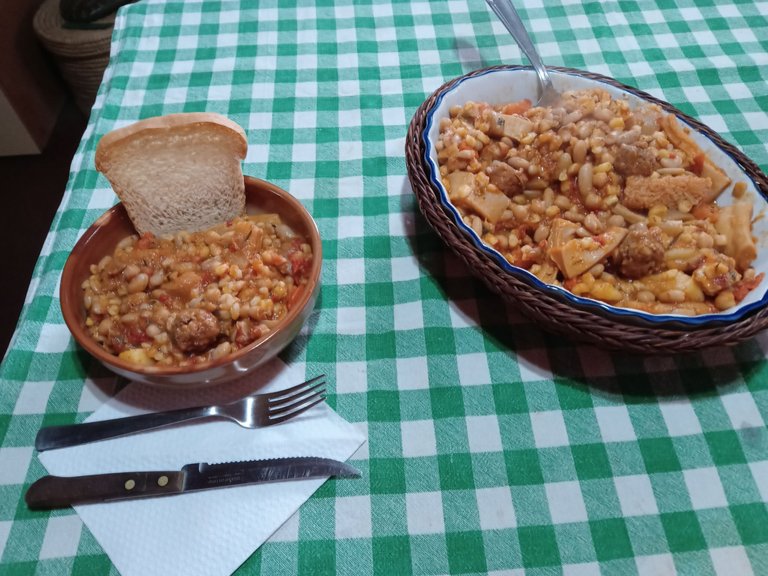
Hello dear #hivers lovers of good food,
this is my first post in more than two years of active collaboration in #HIVE in this Community, and specifically in this type of content.
Actually, in my house the real chef is my wife, who has managed to join an experience of two decades working in the kitchens of a country that, like Italy, has made cooking an art. I only accompany or collaborate.
But in this case I decided to venture - considering the special date - in a Community somewhat unknown to me and in which I hope not to make too much bad figure, to present a special meal.
Yesterday, May 25 was celebrated in Argentina, the day of freedom, that is, the moment from which in the year 1810 slavery was abolished.
Just as the asado is traditional in this country throughout the year as a way of cooking meat on the coals (on the grill or barbecue) or in the oven, no less so is the traditional locro for May 25.
In this case the recipe that I am going to present has some variations, for example tripe instead of pork feet, for this reason, we have called it - in collaboration with my wife who has been the main responsible for carrying out the whole process of the recipe - Mondongo Stew that reminded us of the traditional Italian Busecca or Trippa alla Milanese, a culinary classic of that country that we have been able to taste so many times during our long stay in the Italian peninsula.
In Italy it was served in the past (and in some cases it is still served) on Christmas Eve or Christmas, very cold periods similar to our May. It was a dish of the so-called "poor", because it cost little, was found on all the tables of peasants or mountain dwellers and was made with all the elements that could be found on the farm, from meat to vegetables.
Having made the respective introductions and caveats, let's go to the recipe of Guiso de Mondongo.
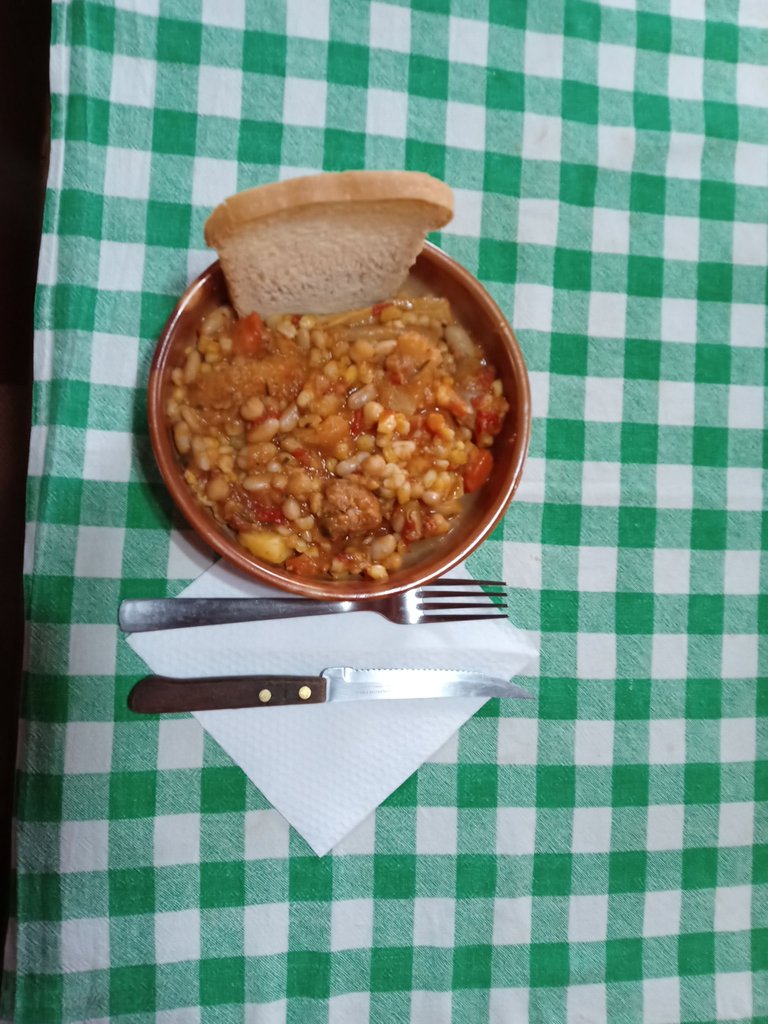
Hola estimados #hivers amantes de la buena cocina,
es mi primer post en más de dos años de colaboración activa en #HIVE en esta Comunidad, y específicamente en este tipo de contenidos.
En realidad, en mi casa el verdadero chef es mi esposa, quien ha logrado unir a una experiencia de dos décadas trabajando en las cocinas de un país que, como Italia, ha hecho de la cocina un arte. Yo solo acompaño o colaboro.
Pero en este caso decidí incursionar -considerando la fecha especial- en una Comunidad algo desconocida para mí y en la cual espero no hacer demasiada mala figura, para presentar una comida especial.
Ayer 25 de mayo se festejó en Argentina, el día de la libertad, es decir, el momento desde el cuál en el año 1810 fue abolida la esclavitud.
Así como el asado es tradicional en este país durante todo el año como un modo de cocinar la carne a las brasas (en la parrilla o barbecue) o al horno, no lo es de menos el tradicional locro para el 25 de mayo.
En este caso la receta que les voy a presentar tiene algunas variantes, por ejemplo mondongo en lugar de patitas de cerdo, por este motivo, la hemos llamado -en colaboración con mi esposa que ha sido la principal responsable de llevar adelante todo el proceso de la receta- Guiso de Mondongo que nos hizo recordar la tradicional Busecca o Trippa alla Milanese italiana, un clásico culinario de aquel país que hemos podido degustar tantas veces durante nuestra larga estadía en la península itálica.
En Italia se servía en tiempos pasados (y en algunos casos se hace todavía) en Nochebuena o Navidad, periodos de mucho frío similares a nuestro mayo. Era un plato de los llamados "pobres", en función de que costaba poco, se encontraba en todas las mesas de los campesinos o habitantes de montaña y se hacía con elementos todos que se podían encontrar en la granja, desde la carne hasta las hortalizas.
Hecha las respectivas presentaciones y salvedades, vamos a la receta del Guiso de Mondongo.

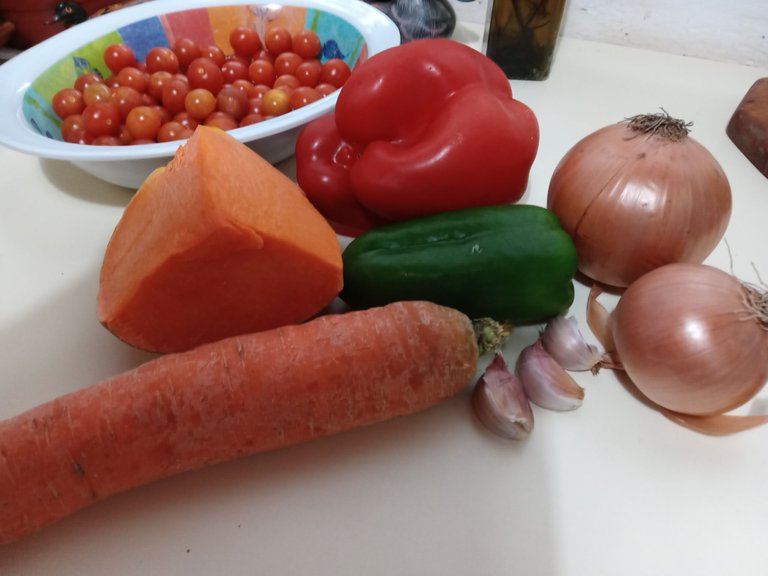

1 1/2 kg of tripe.
1/2 kg of pork horitos.
4 red chorizo sausages.
300 grs tomato puree.
300 grs of broken corn.
300 grs of beans.
200 grams of chickpeas.
2 medium onions.
3 large garlic cloves.
1 red bell bell pepper.
1 green bell bell pepper.
1 carrot.
1 small pumpkin.
2 bay leaves.
Salt to taste.
Pepper to taste.
vegetable broth if necessary.
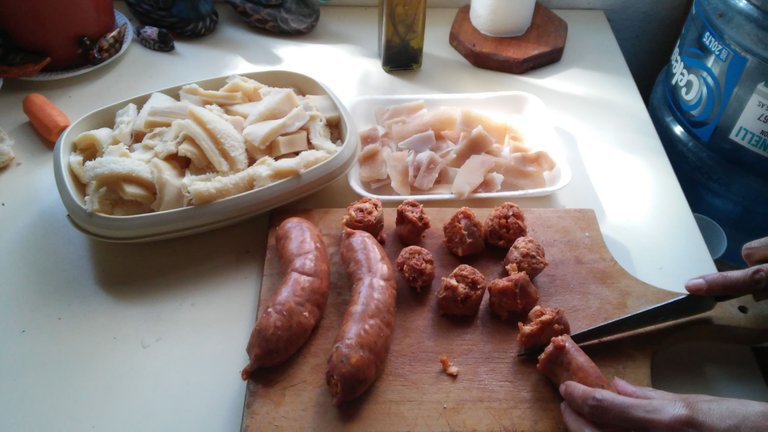 | 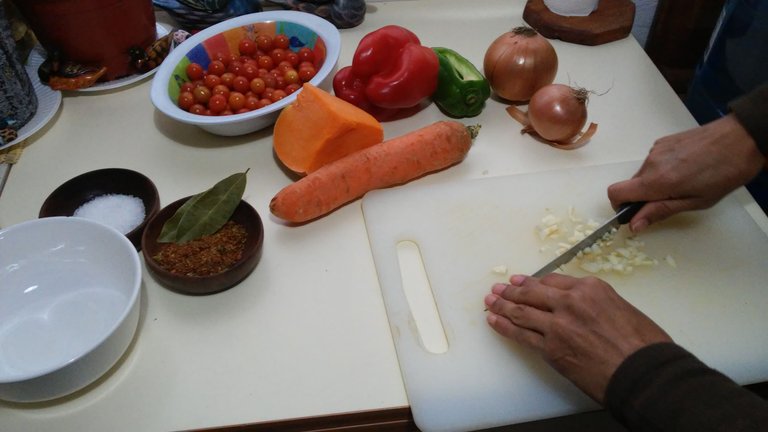 |
|---|---|
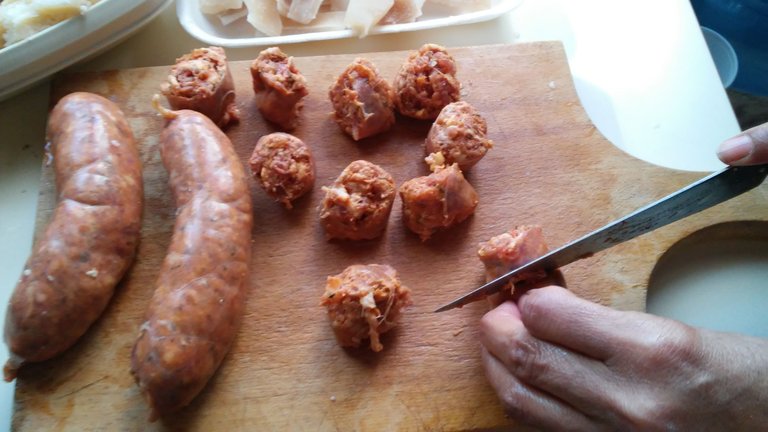 | 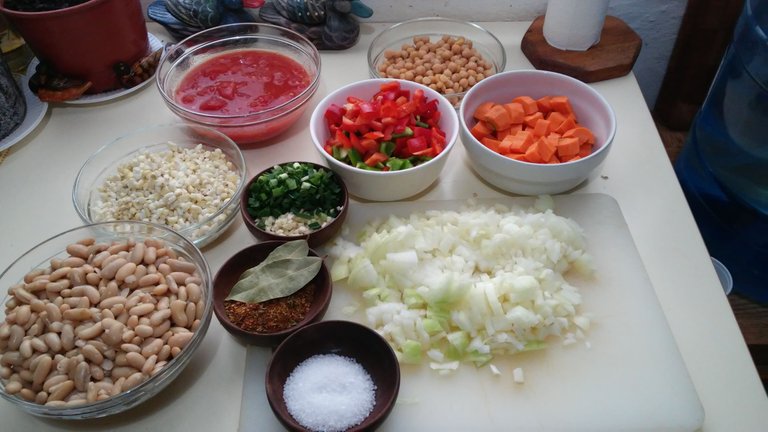 |
1 1/2 kg de mondongo.
1/2 kg de cueritos de cerdo.
4 chorizos colorados.
300 grs puré de tomate.
300 grs de maíz partido.
300 grs de porotos.
200 grs de garbanzos.
2 cebollas medianas.
3 dientes de ajo grandes.
1 morrón rojo.
1 morrón verde.
1 zanahoria.
1 zapallo tipo anco chico.
2 hojas de laurel.
sal a gusto.
pimienta a gusto.
caldo vegetal si es necesario.

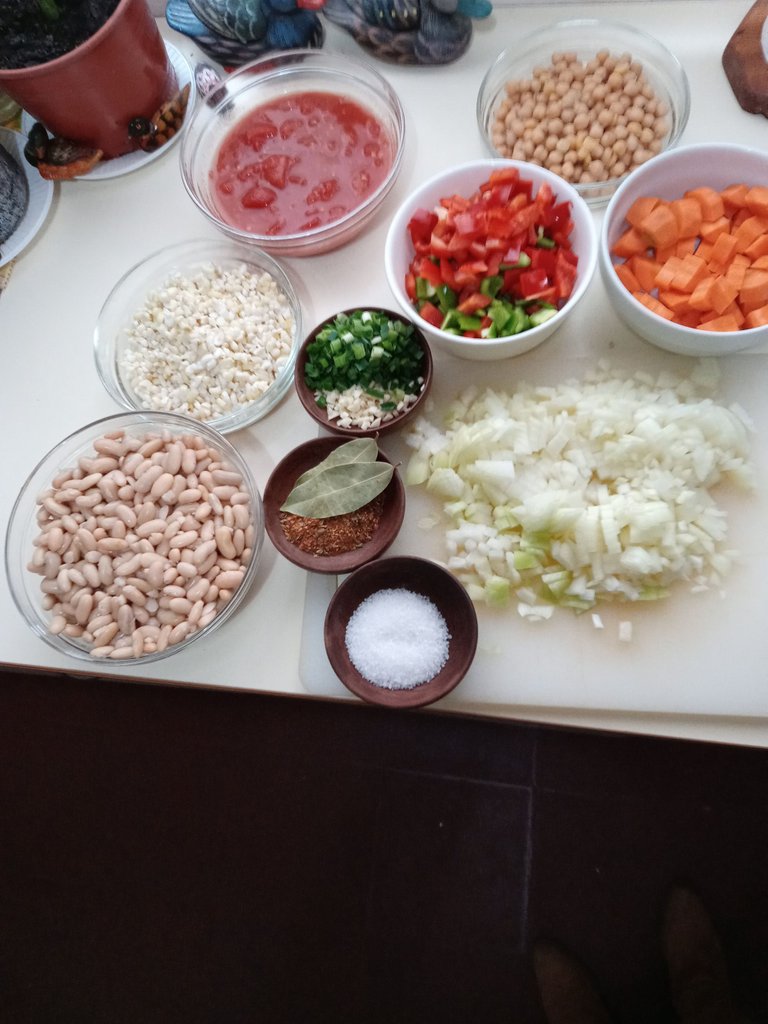

The first thing we have to do is to cut and degrease the tripe and for this we boil it for a few minutes, when it is cold we cut it into small pieces.
The same procedure we have to do with the pig's horns, remove the fat they have and cut them into strips.
Then we cut the chorizos in pieces neither too big nor too small so that they do not fall apart when cooking.
The chorizos have already incorporated different ingredients and salt, so you must be very attentive when you add some flavors as the stew is cooking.
The first thing we have to do is to cut and degrease the tripe and for this we boil it for a few minutes, when it is cold we cut it into small pieces.
The same procedure we have to do with the pig's horns, remove the fat they have and cut them into strips.
Then we cut the chorizos in pieces neither too big nor too small so that they do not fall apart when cooking.
The chorizos have already incorporated different ingredients and salt, so you must be very attentive when you add some flavors as the stew is cooking.
Chop the onion and cut all the vegetables, the carrot preferably in rounds and the pumpkin in rather small square pieces.
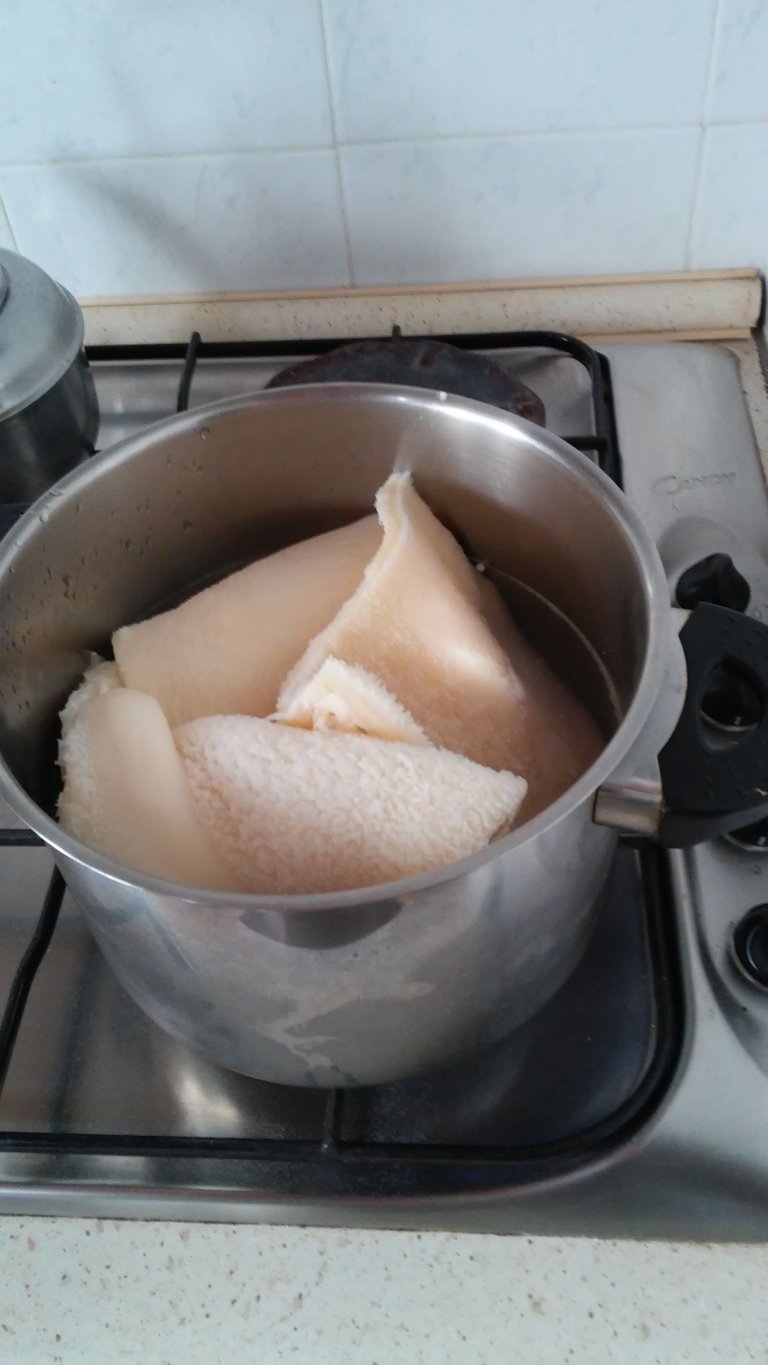 | 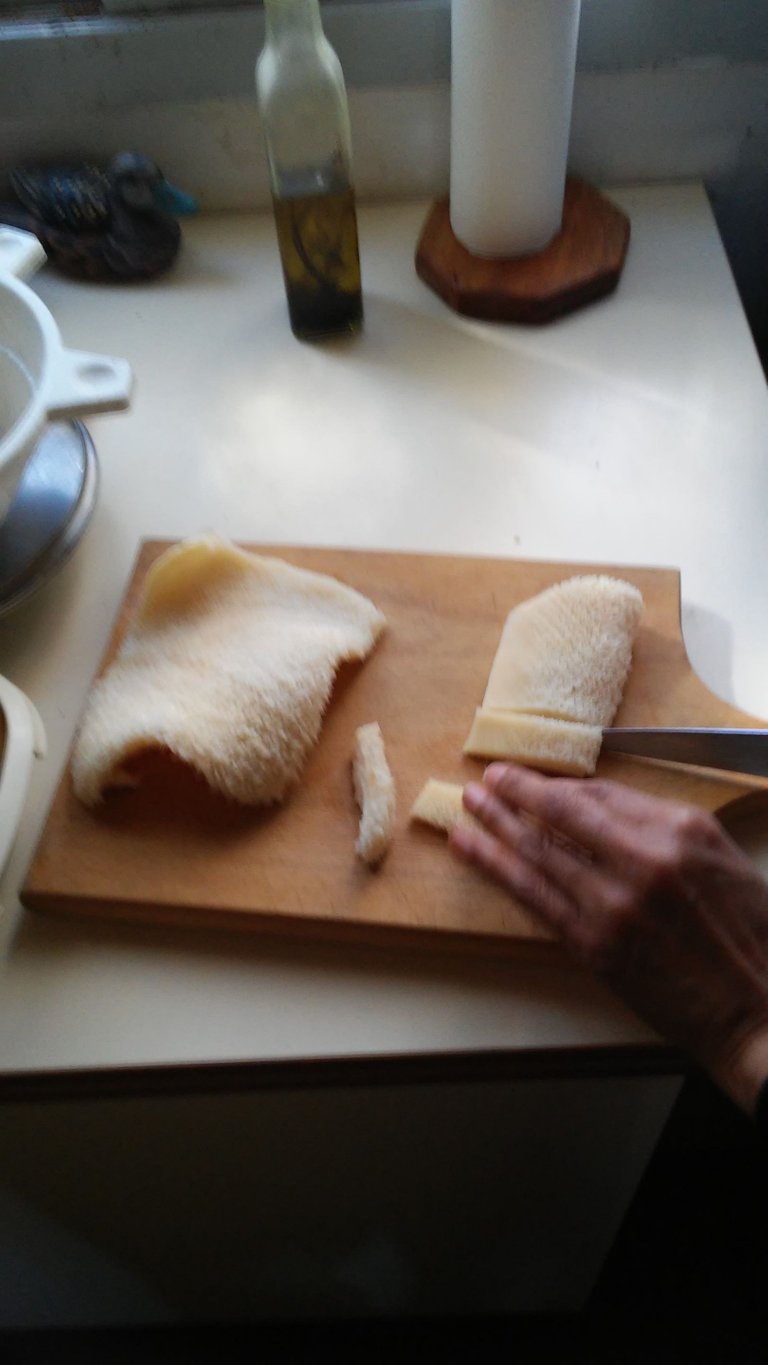 |
|---|---|
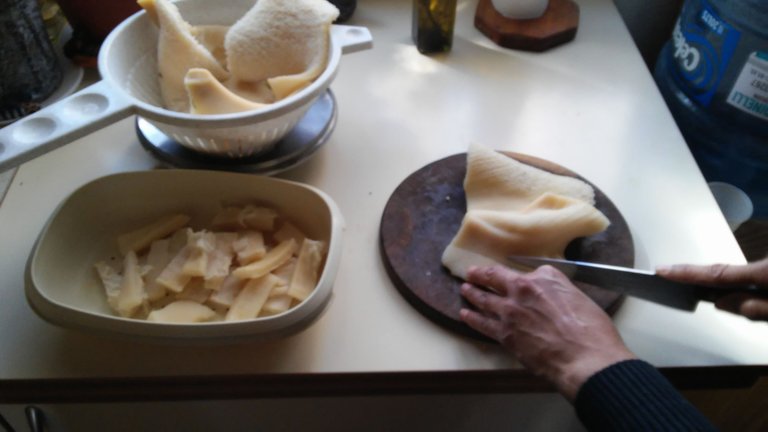 | 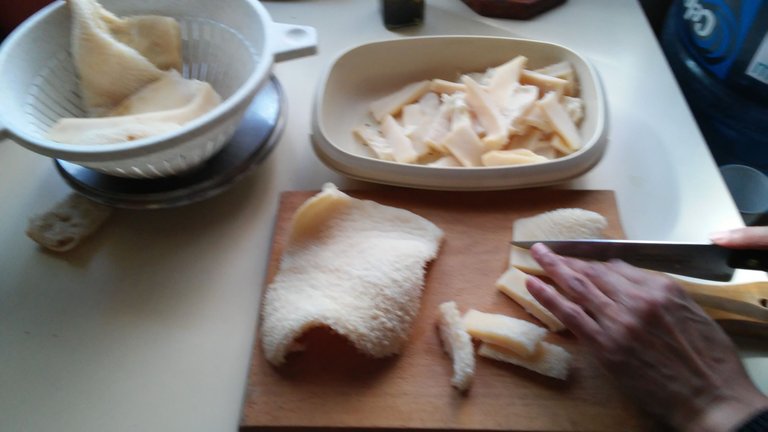 |
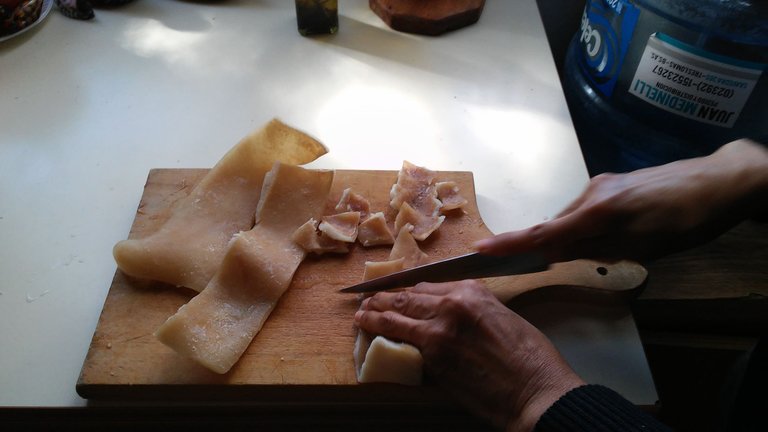
Lo primero que tenemos que hacer es cortar y desgrasar el mondongo y para ello lo hacemos hervir durante unos minutos, cuando está frío lo cortamos en pequeños trozos.
El mismo procedimiento tenemos que hacer con los cueritos de cerdo, sacarles la grasa que tienen y cortarlos en tiras.
Luego cortamos los chorizos en trozos ni demasiado grandes ni demasiado pequeños para que no se desarmen al cocinarlos.
Los chorizos ya tienen incorporados distintos ingredientes y sal por lo cuál deben estar muy atento/as cuando le agregan algunos sabores a medida que se va cocinando el guiso.
Lo primero que tenemos que hacer es cortar y desgrasar el mondongo y para ello lo hacemos hervir durante unos minutos, cuando está frío lo cortamos en pequeños trozos.
El mismo procedimiento tenemos que hacer con los cueritos de cerdo, sacarles la grasa que tienen y cortarlos en tiras.
Luego cortamos los chorizos en trozos ni demasiado grandes ni demasiado pequeños para que no se desarmen al cocinarlos.
Los chorizos ya tienen incorporados distintos ingredientes y sal por lo cuál deben estar muy atento/as cuando le agregan algunos sabores a medida que se va cocinando el guiso.
Picar la cebolla y cortar todas las verduras, la zanahoria preferentemente en redondeles y el zapallo en trozos cuadrados más bien pequeños.

Sauté the chopped onion in oil inside the pot until it begins to brown and start adding the ingredients.
Add the tripe cut in pieces, the chorizos and the tomato puree (or natural tomato, whatever you prefer), cover the pot and let it cook over moderate heat for 10-15 minutes.
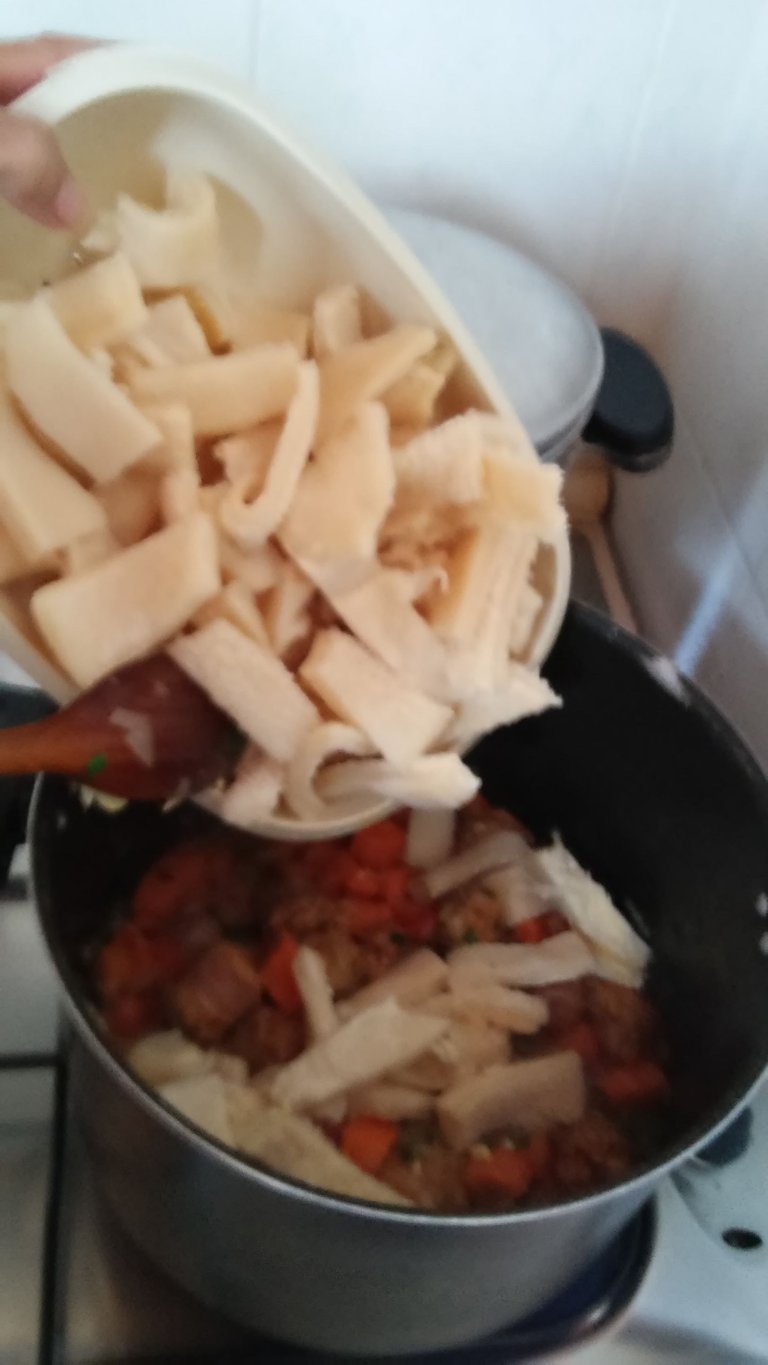 | 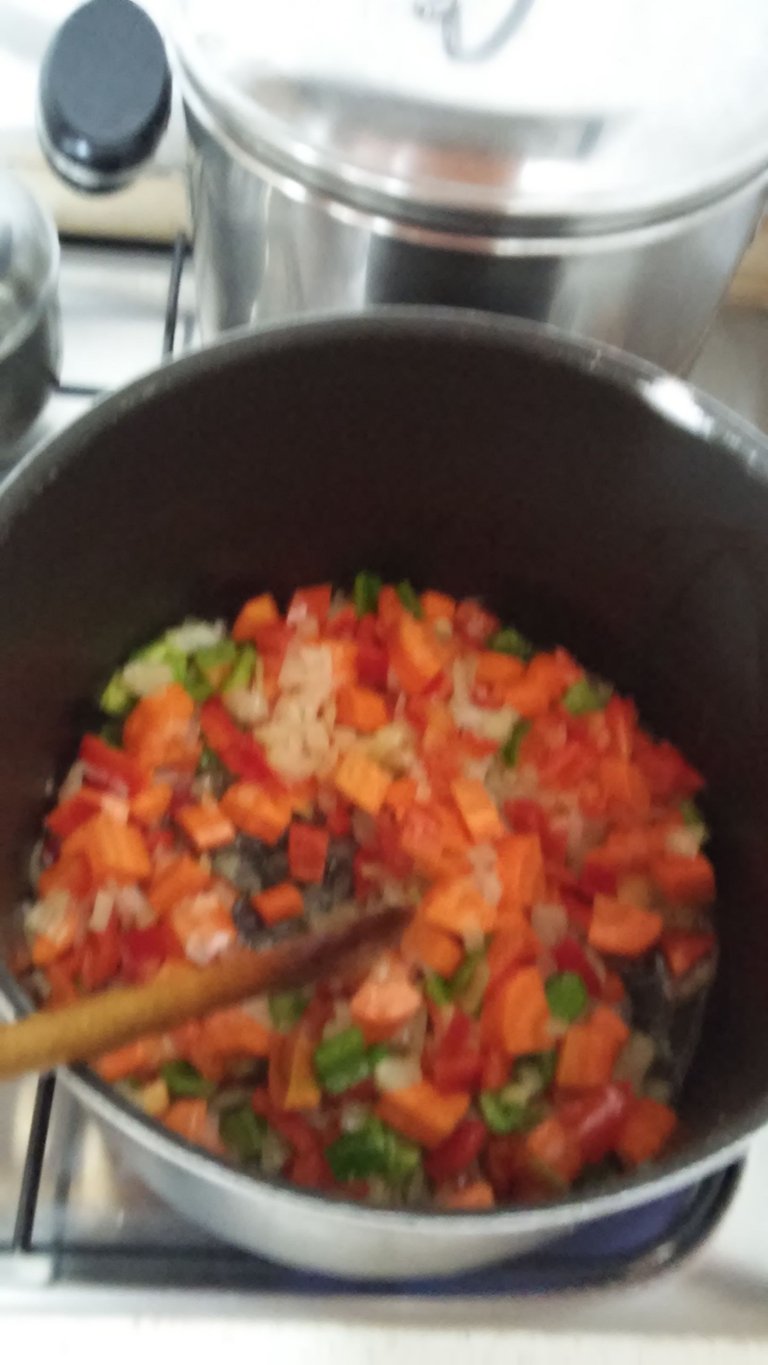 |
|---|---|
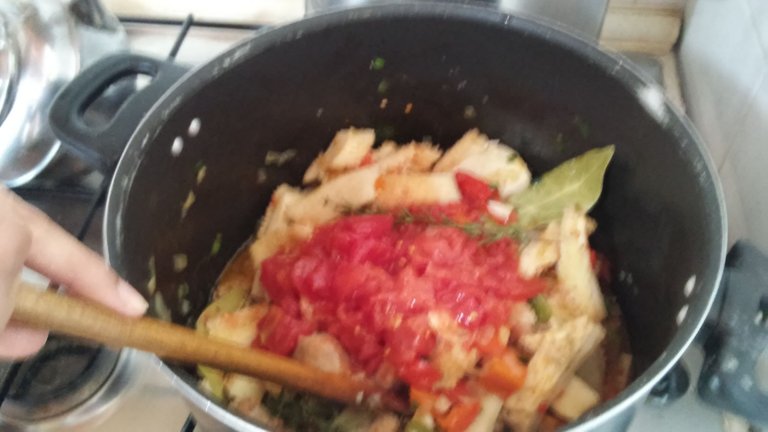 |  |
Rehogamos en aceite la cebolla picada dentro de la olla hasta que comience a dorarse y comenzamos a agregar los ingredientes.
Incorporamos el mondongo cortado en trozos, los chorizos y el puré de tomate (o tomate al natural, lo que prefieran), tapamos la olla y lo dejamos cocinar a fuego moderado por espacio de 10-15 minutos
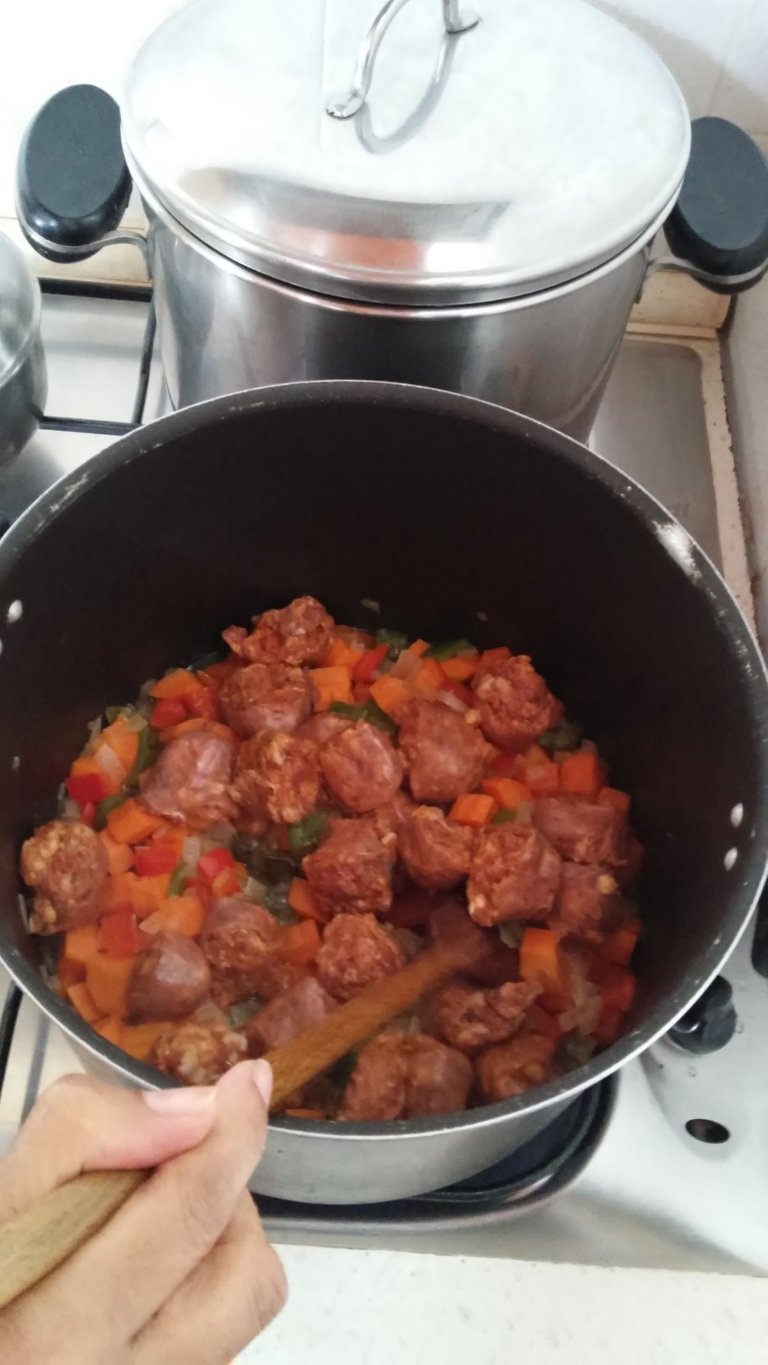 | 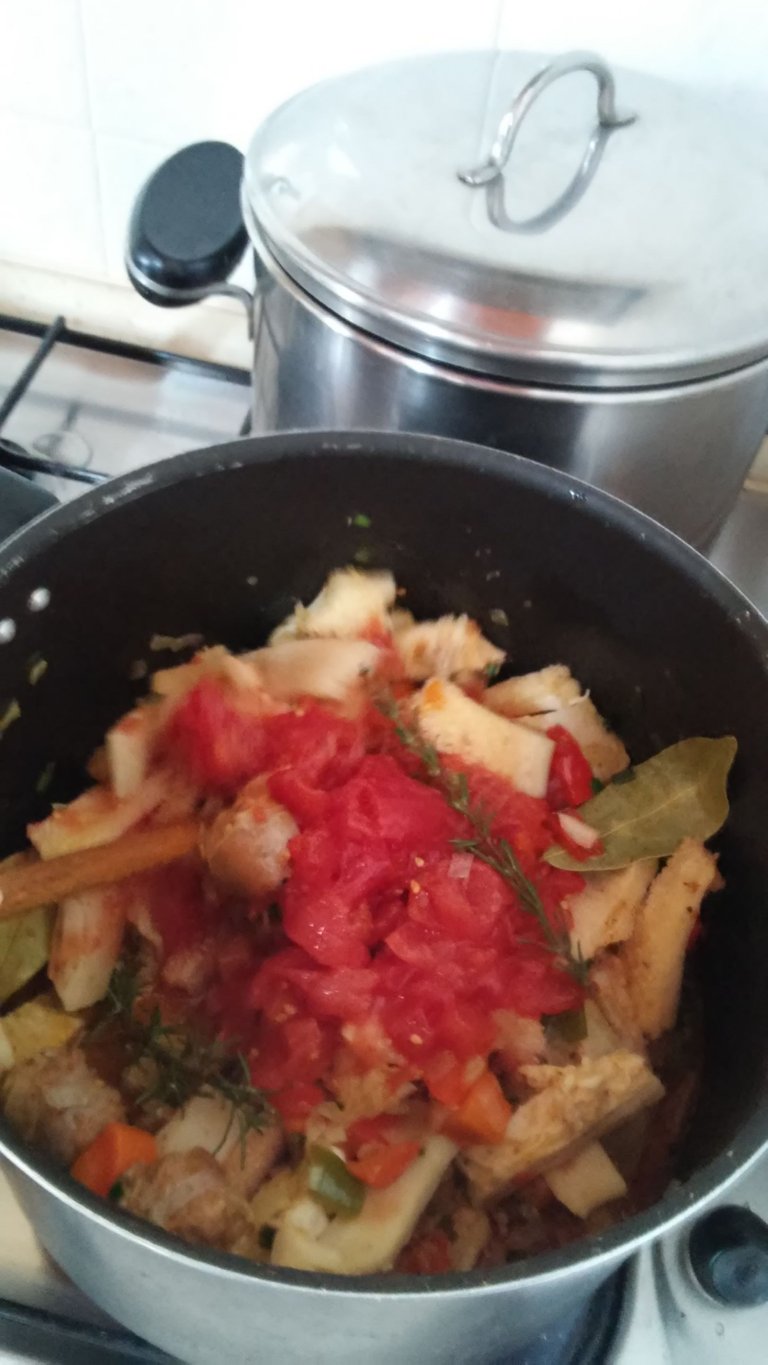 |
|---|---|
 | 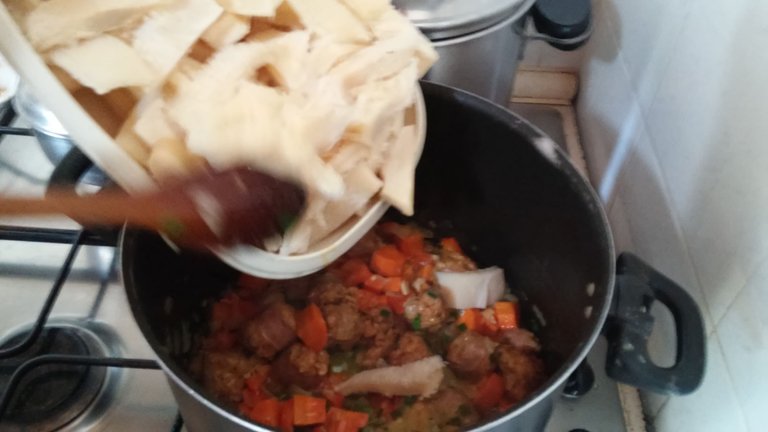 |
 | 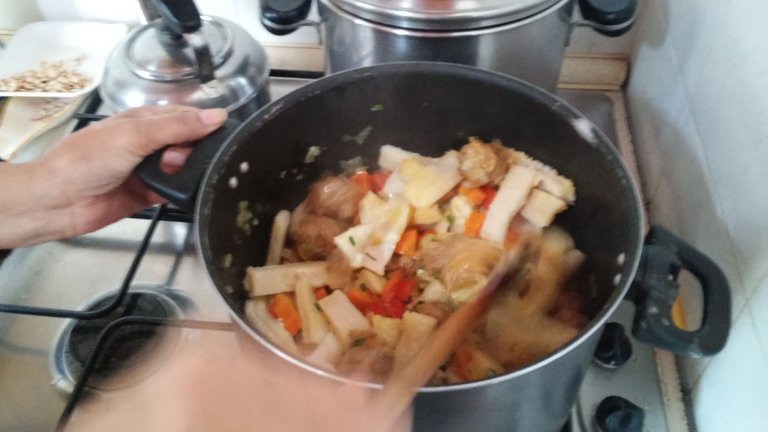 |
We add the pig's horitos (they generally need less time of cooking) and little by little we incorporate the rest of the ingredients, vegetables and legumes, we cover the pot and we cook for 30-45 minutes to moderate fire, stirring from time to time with a wooden spoon to avoid that the ingredients stick in the bottom of the pot.
It is a good habit to place an iron disk between the stove and the pot to attenuate the direct heat of the fame on the stainless steel.
Do not forget to add bay leaves, they give a special flavor to the food.
 | 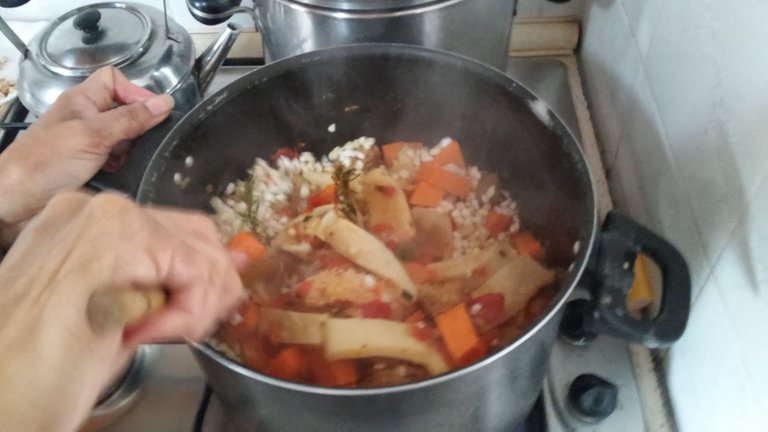 |
|---|---|
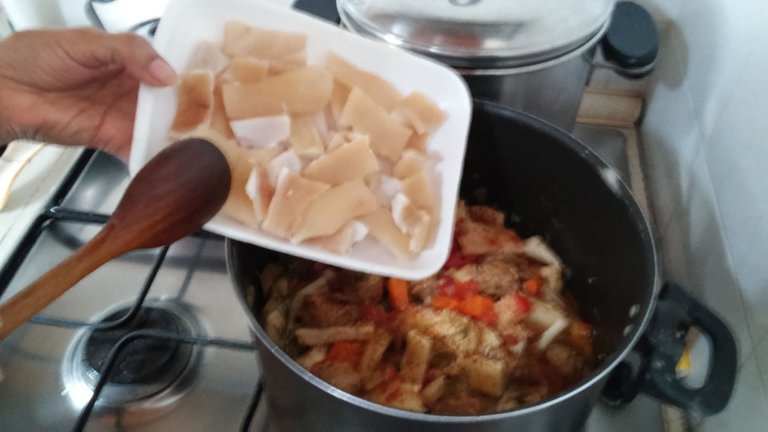 | 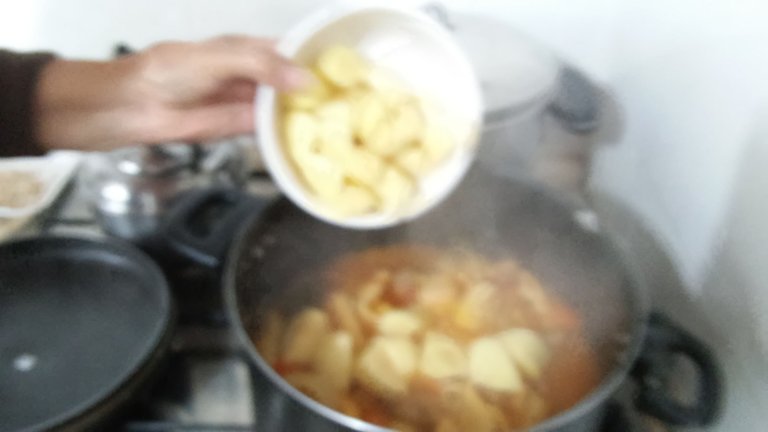 |
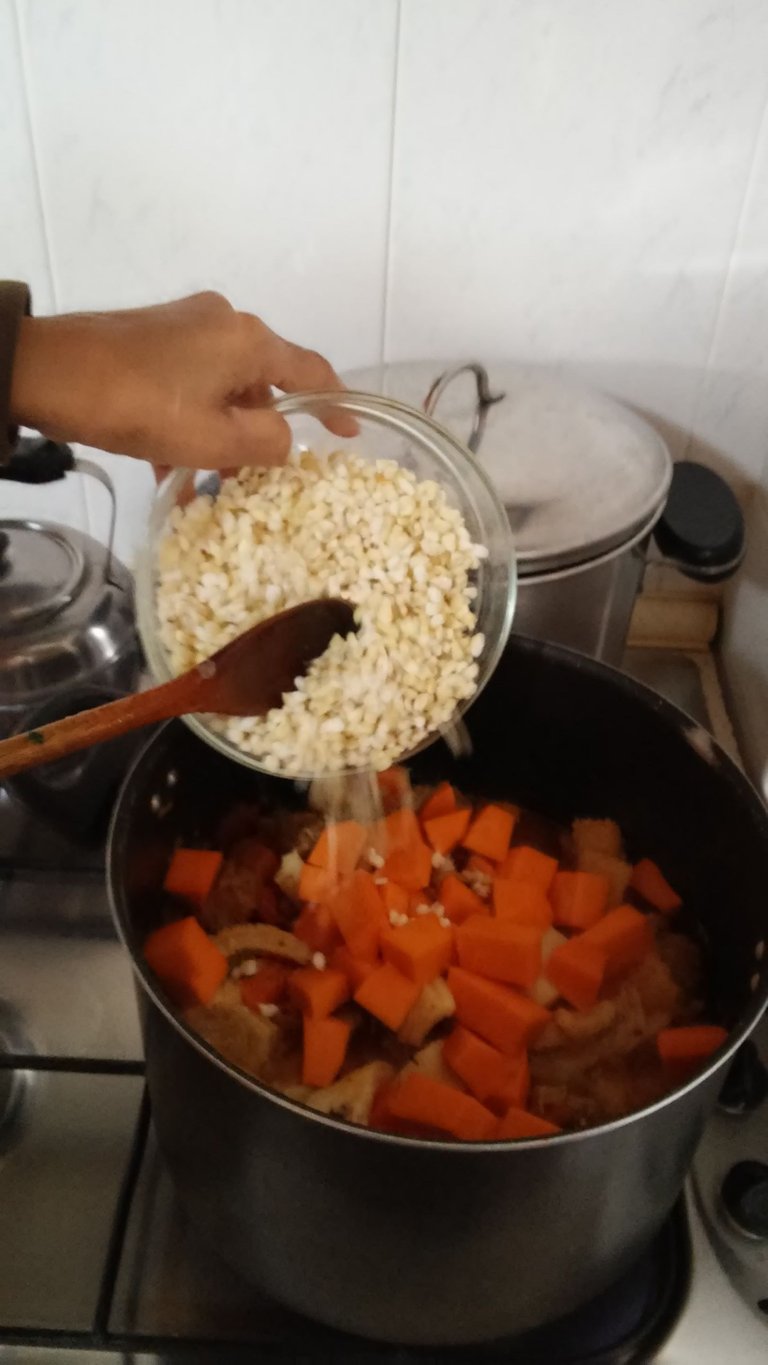 |  |
Agregamos los cueritos de cerdo (necesitan generalmente menos tiempo de cocción) y de a poco vamos incorporando el resto de los ingredientes, hortalizas y legumbres, tapamos la olla y cocinamos por espacio de 30-45 minutos a fuego moderado, revolviendo de vez en cuando con una cuchara de madera para evitar que se peguen los ingredientes en el fondo de la olla.
Es una buena costumbre colocar entre el fuego de la cocina y la olla un disco de hierro para atenuar el calor directo de la fama sobre el acero inoxidable.
No olvidemos de agregar las hojas de laurel, le dan un sabor especial a la comida.
 | 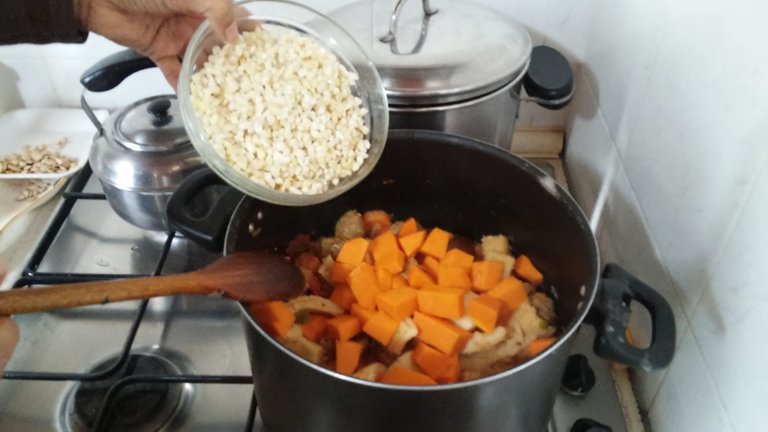 |
|---|---|
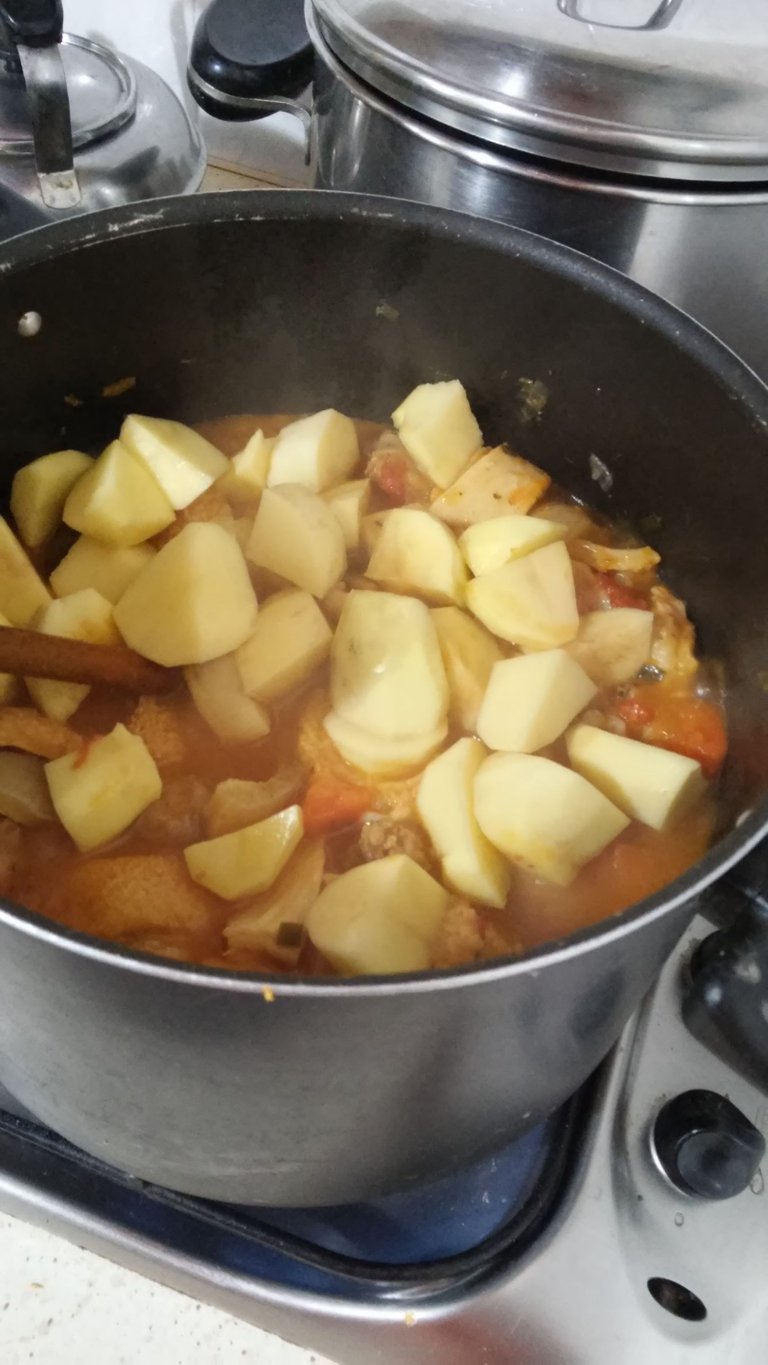 |  |
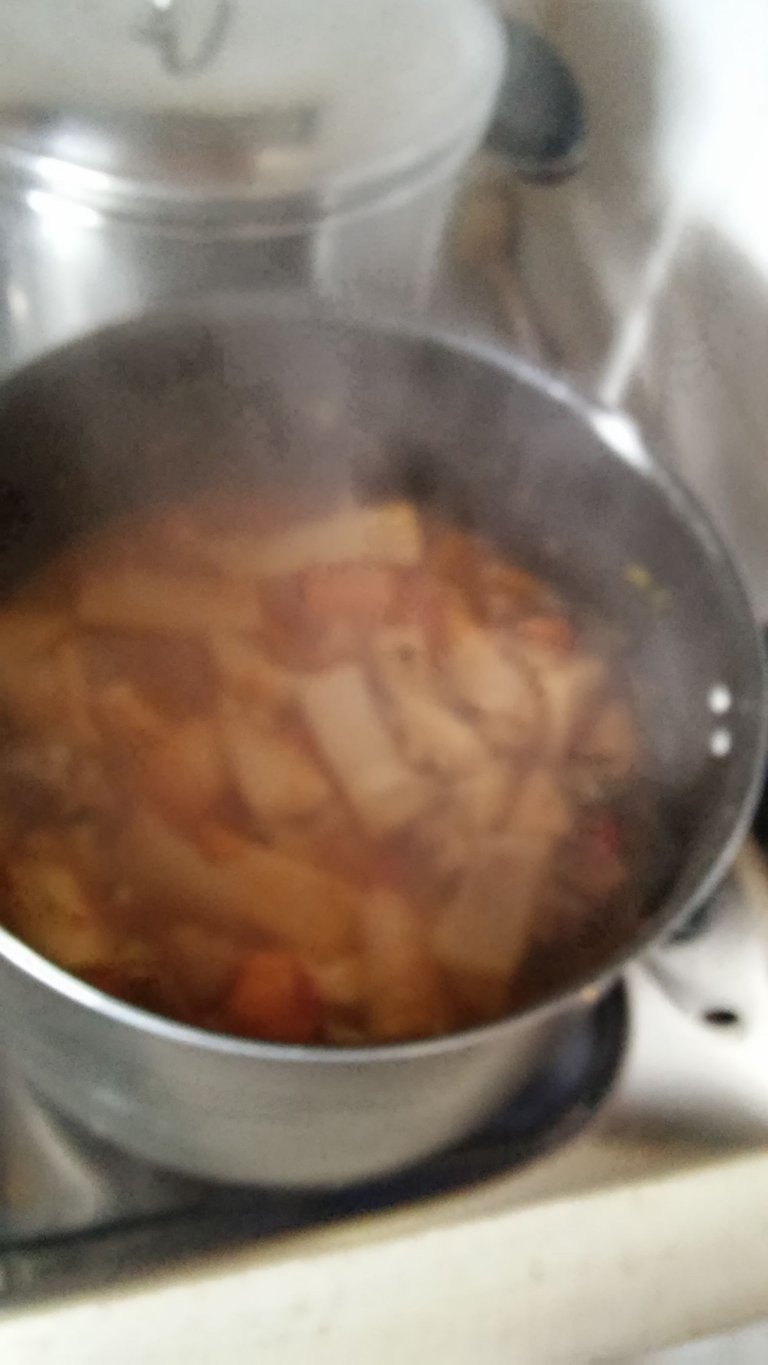 | 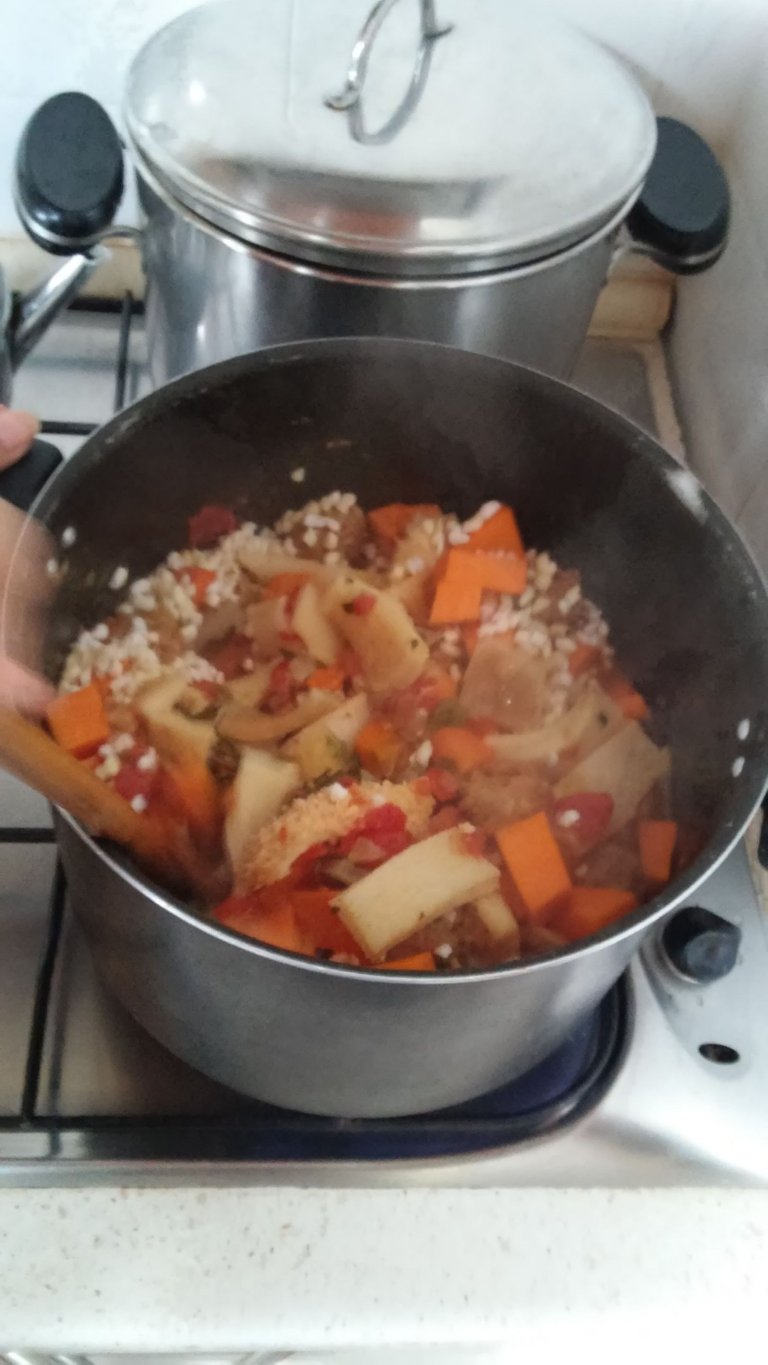 |
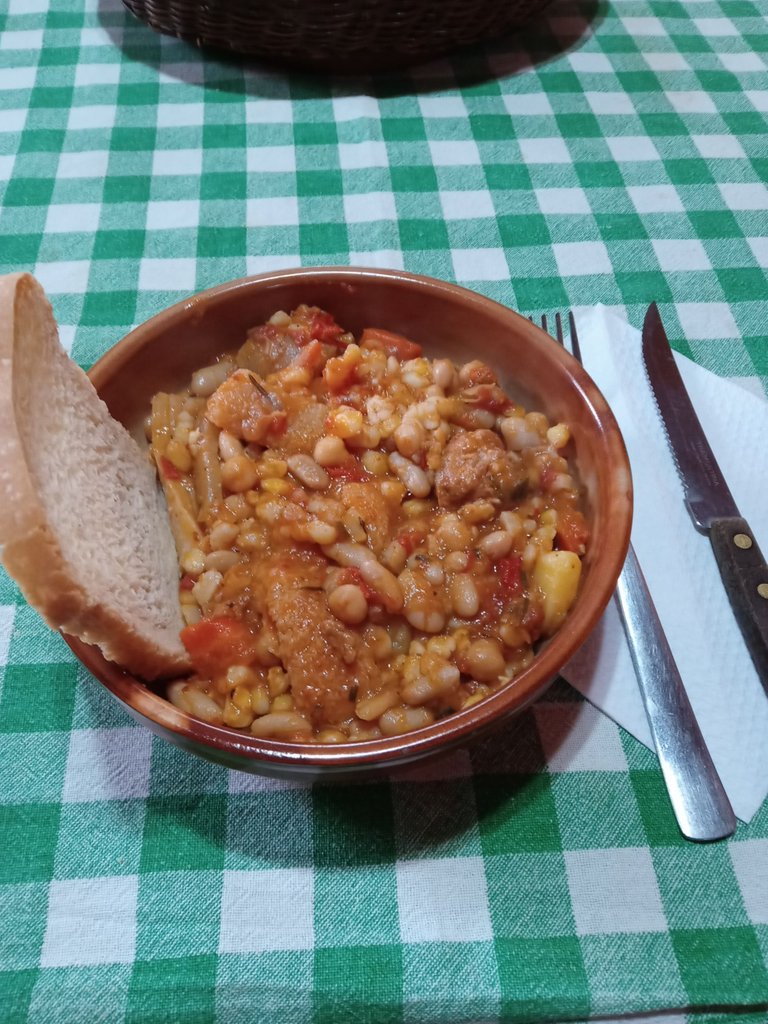
I hope you enjoy this recipe not only reading it but also preparing it.
Bon appetite!
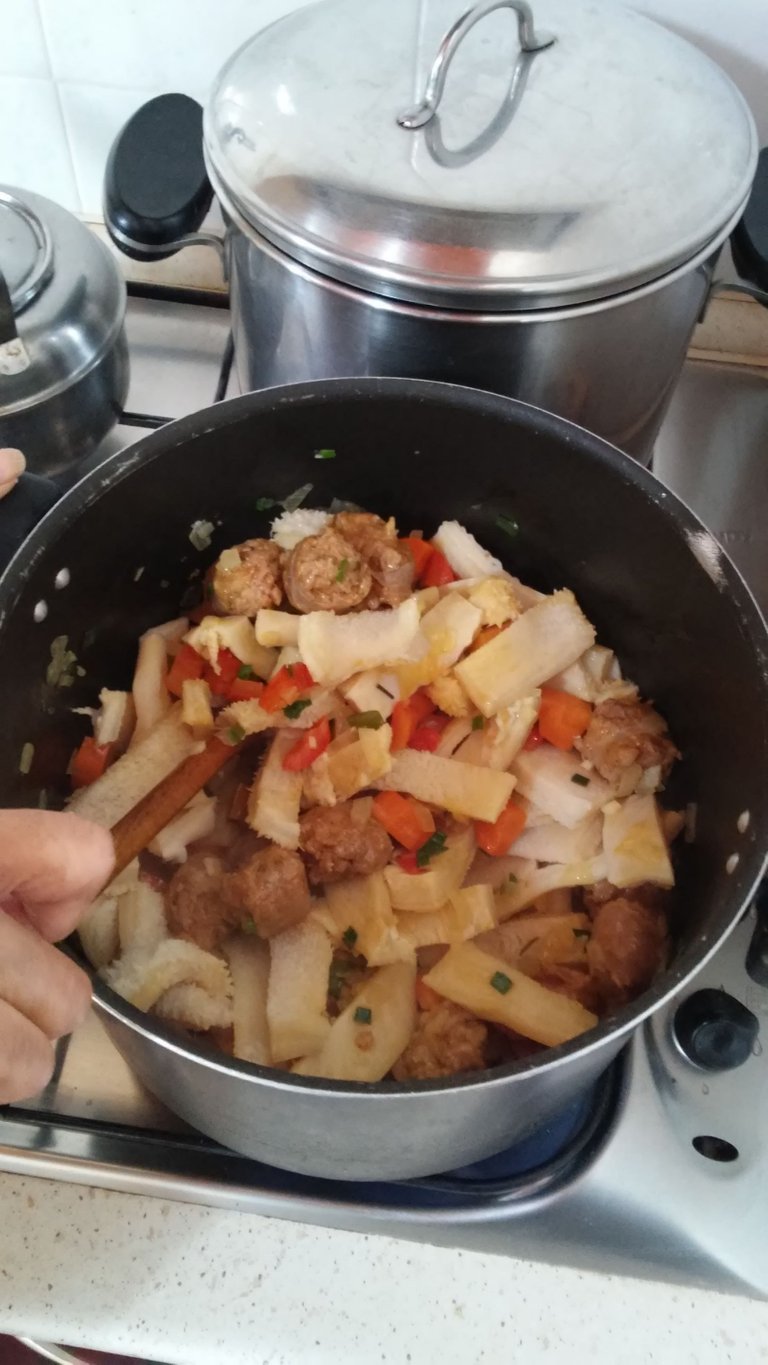
Espero que disfruten de esta receta no solo leyéndola sino también preparándola.
Buen apetito!!!
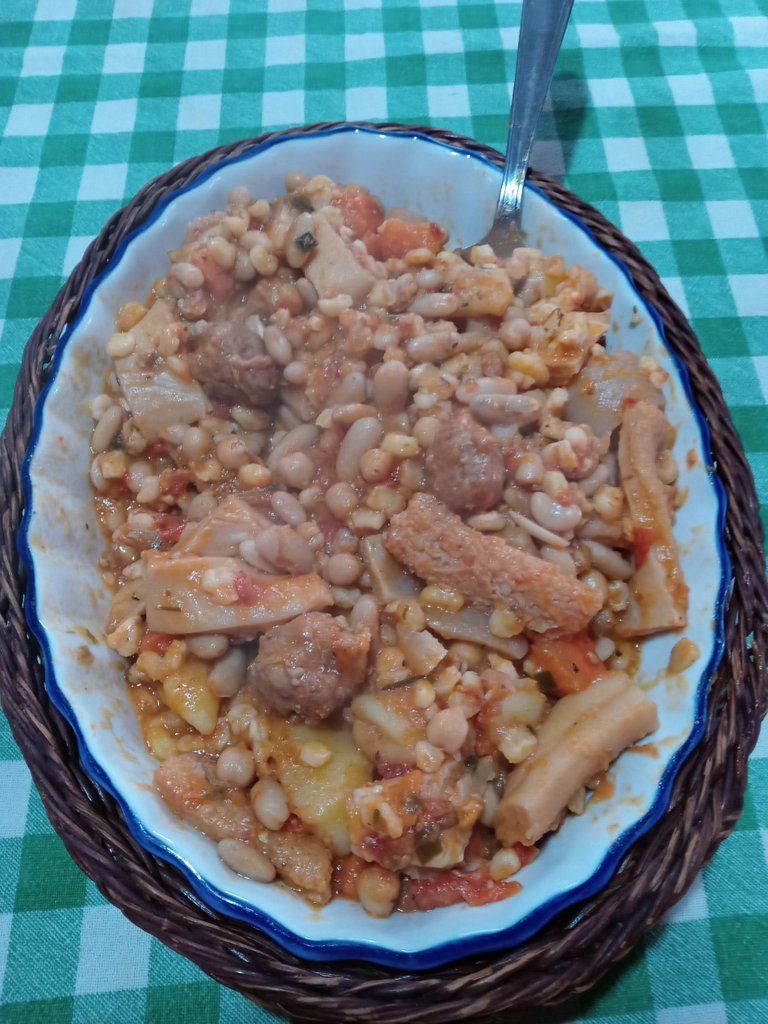


The rewards earned on this comment will go directly to the people(@greengalletti) sharing the post on Twitter as long as they are registered with @poshtoken. Sign up at https://hiveposh.com.
My husband will love this recipe, a Terence Hill looks recipe!❤️
Excelente post, muy bien documentado.
Saludos cordiales y muchos éxitos!
Dear @greengalletti, we need your help!
The Hivebuzz proposal already got an important support from the community. However, it lost its funding few days ago and only needs a few more HP to get funded again.
May we ask you to support it so our team can continue its work this year?
You can do it on Peakd, ecency,
https://peakd.com/me/proposals/199
Your support would be really helpful and you could make the difference! Thank you!